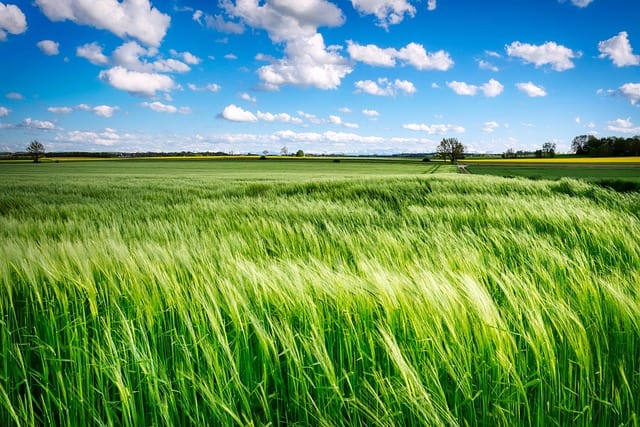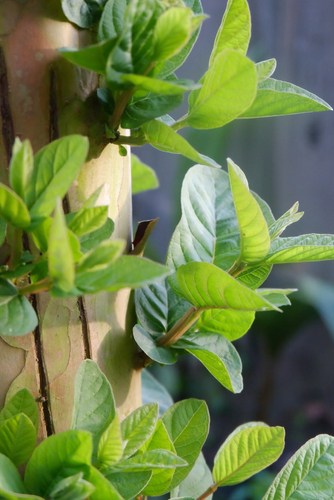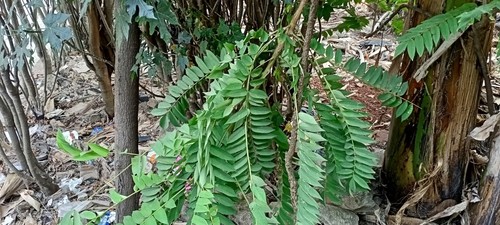Plant leaves turning upside down may seem like an unusual phenomenon, but it is a common occurrence that happens for various reasons.
The science behind leaf movement is complex, and the reasons for leaves turning upside down are diverse, from plant response to environmental stress to specific plant species and leaf movement.
Understanding why plant leaves turn upside down can help gardeners and plant enthusiasts take better care of their plants and keep them healthy.
Plants have evolved to respond to their environment, and changes in environmental conditions can cause leaves to turn upside down. Environmental factors such as temperature, humidity, light, and water can all contribute to leaf reversal.
Different plant species may respond differently to these environmental stressors, and some plants may be more prone to leaf reversal than others. Understanding how specific plants respond to environmental stress can help gardeners and plant enthusiasts create optimal growing conditions for their plants.
Key Takeaways
- Plant leaves turn upside down for various reasons, including plant response to environmental stress and specific plant species and leaf movement.
- Understanding how different plants respond to environmental stress can help gardeners create optimal growing conditions for their plants.
- Providing the right growing conditions and addressing any issues promptly can help plants thrive and produce beautiful leaves.
Check out these other top posts in this category:
- What Happens If You Plant Potatoes Upside Down?
- What Does ZZ Plant Root Rot Look Like
- What Does an Underwatered Spider Plant Look Like
The Science Behind Leaf Movement

Plants are known for their ability to move, and one of the most interesting movements is the turning of leaves upside down. This phenomenon is caused by a hormone called auxin, which accumulates on the lower side of the leaf and causes it to grow away from the force of gravity.
Role of Turgor Pressure
The movement of plant leaves is also influenced by turgor pressure, which is the pressure exerted by water inside the plant cells. When the plant cells are full of water, they become turgid and the leaves stand upright. When the water pressure decreases, the leaves become flaccid and droop.
Effect of Light and Temperature
Light and temperature are also factors that affect leaf movement. When plants are exposed to light, they produce more auxin on the shaded side of the leaf, causing it to grow towards the light.
Temperature can also affect leaf movement, as cooler temperatures can cause leaves to become more rigid and upright, while warmer temperatures can cause them to become more flexible and droop.
Plant Response to Environmental Stress
Plants are exposed to various environmental stressors such as water scarcity and strong winds. In response to these stressors, plants have developed various mechanisms to help them adapt and survive in harsh conditions.
Water Stress
Water stress is one of the most common environmental stressors that plants face. In response to water scarcity, plants undergo a process called leaf reversal, where the leaves turn upside down. This helps the plant to reduce water loss by minimizing the surface area of the leaves exposed to the sun.
Leaf reversal also helps the plant to absorb more sunlight for photosynthesis.
In addition to leaf reversal, plants also undergo various physiological changes in response to water stress. For example, they close their stomata, which are tiny pores on the leaves that allow for gas exchange. By closing the stomata, plants reduce water loss through transpiration.
Wind Stress

Strong winds can cause physical damage to plants by breaking branches and uprooting them. In response to wind stress, plants have developed various mechanisms to help them withstand strong winds.
For example, some plants have flexible stems that can bend without breaking. Others have developed strong root systems that anchor them firmly to the ground.
In addition to physical adaptations, plants also undergo various physiological changes in response to wind stress. For example, they may reduce the size of their leaves to minimize the surface area exposed to the wind. They may also produce more wax on their leaves to reduce water loss through transpiration.
Specific Plant Species and Leaf Movement
When it comes to leaf movement, different plant species have their unique ways of responding to environmental changes. In this section, we will look at two specific plant species and their leaf movement.
Prayer Plants
Prayer plants, scientifically known as Maranta leuconeura, are known for their unique leaf movement. During the day, their leaves are horizontal, but at night, they fold their leaves up like hands in prayer. This movement is known as “nyctinasty” and is believed to be a response to changes in light and temperature.
Prayer plants have a specialized structure called the pulvinus at the base of each leaf. The pulvinus contains motor cells that respond to changes in light and temperature by pumping water in and out of the cells, causing the leaf to move up or down.
Mimosa Pudica
Mimosa pudica, also known as the sensitive plant, is another plant species that exhibits unique leaf movement. When the plant is touched or shaken, its leaves fold up and droop down, a process known as “thigmonasty.” This response is believed to be a defense mechanism against predators.
Like prayer plants, Mimosa pudica also has a specialized structure called the pulvinus that allows for quick leaf movement. The pulvinus contains motor cells that respond to mechanical stimulation by pumping water in and out of the cells, causing the leaf to move up or down.
Conclusion

Plant leaves turning upside down, also known as leaf flop, can be caused by various factors. While it may be a sign of a problem, it is not always an indication of poor health. Understanding the reasons behind leaf flop can help gardeners and plant enthusiasts take the necessary steps to prevent or mitigate the issue.
One common cause of leaf flop is excessive heat or sunlight. When leaves receive too much sunlight, they may turn upside down to reduce the amount of light they absorb. This is a natural response that helps protect the plant from damage and dehydration.
Another reason why plant leaves turn upside down is due to water stress. When a plant does not receive enough water, it may turn its leaves upside down to minimize water loss. This is a survival mechanism that helps the plant conserve water and survive during periods of drought.
Leaf flop can also be caused by pests and diseases. Insects or fungi can damage the leaves, causing them to wilt or turn upside down. It is important to identify the pest or disease and take appropriate measures to control or eliminate it.
Frequently Asked Questions
What causes plant leaves to turn upside down?
Plant leaves can turn upside down due to a variety of reasons, including environmental stress factors such as extreme temperatures, drought, or high humidity levels. Sometimes, pests or diseases can also cause leaves to curl or turn upside down.
Are there certain types of plants that are more prone to upside-down leaves?
Yes, some plants are more prone to upside-down leaves than others. For example, some tomato varieties are known to exhibit upside-down leaf orientation when exposed to high temperatures. Other plants that are prone to this include pepper plants and eggplants.
How does weather affect plant leaves and their orientation?
Weather can have a significant impact on plant leaves and their orientation. High temperatures can cause leaves to curl or turn upside down as a way for the plant to conserve water.
Conversely, low temperatures can also cause leaves to curl or droop as a way to protect the plant from frost damage.
What role do hormones play in leaf orientation?
Plant hormones, such as auxins, play a crucial role in leaf orientation. They help to regulate the growth and development of plant tissues, including leaves. Auxins can influence the direction of leaf growth, which can affect the orientation of the leaf.
Can changes in soil or water quality cause leaves to turn upside down?
Yes, changes in soil or water quality can cause leaves to turn upside down. For example, overwatering or underwatering plants can lead to stress, which can cause leaves to curl or droop. Similarly, changes in soil pH or nutrient levels can also affect leaf orientation.
Do plants have a mechanism for intentionally turning their leaves upside down?
Yes, some plants have a mechanism for intentionally turning their leaves upside down. This is known as nyctinasty, and it is a process by which plants close their leaves at night as a way to protect themselves from cold temperatures or excessive moisture.
Some plants that exhibit nyctinasty include clover, bean plants, and some legumes.

Hey, I’m Lisa and I’ve been an avid gardener for over 30 years. I love writing, talking and living in the garden! Feel free to connect with me on my socials below


